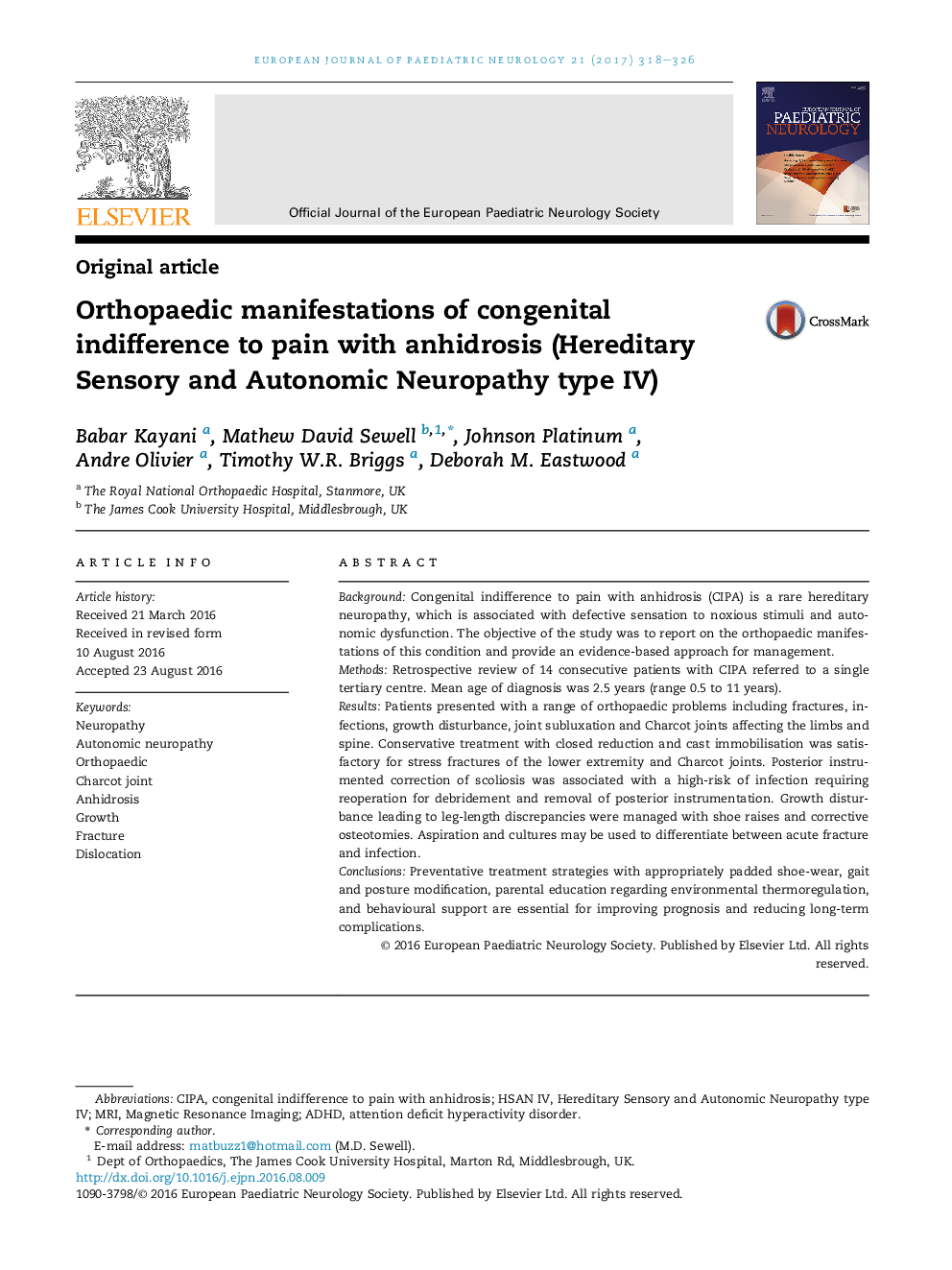| کد مقاله | کد نشریه | سال انتشار | مقاله انگلیسی | نسخه تمام متن |
|---|---|---|---|---|
| 5628954 | 1580001 | 2017 | 9 صفحه PDF | دانلود رایگان |

- CIPA was associated with several orthopaedic conditions including scoliosis, stress fractures and Charcot joints.
- Although Effective, spinal fusion and scoliosis correction was linked with a high-risk of infection, requiring reoperation.
- Stress fractures and Charcot joints were managed by conservative treatment with closed reduction and cast immobilisation.
- The prognosis of CIPA can be improved through parental education regarding environmental thermoregulation.
- Appropriately padded shoe-wear, gait and posture modification were also observed to improve prognosis.
BackgroundCongenital indifference to pain with anhidrosis (CIPA) is a rare hereditary neuropathy, which is associated with defective sensation to noxious stimuli and autonomic dysfunction. The objective of the study was to report on the orthopaedic manifestations of this condition and provide an evidence-based approach for management.MethodsRetrospective review of 14 consecutive patients with CIPA referred to a single tertiary centre. Mean age of diagnosis was 2.5 years (range 0.5 to 11 years).ResultsPatients presented with a range of orthopaedic problems including fractures, infections, growth disturbance, joint subluxation and Charcot joints affecting the limbs and spine. Conservative treatment with closed reduction and cast immobilisation was satisfactory for stress fractures of the lower extremity and Charcot joints. Posterior instrumented correction of scoliosis was associated with a high-risk of infection requiring reoperation for debridement and removal of posterior instrumentation. Growth disturbance leading to leg-length discrepancies were managed with shoe raises and corrective osteotomies. Aspiration and cultures may be used to differentiate between acute fracture and infection.ConclusionsPreventative treatment strategies with appropriately padded shoe-wear, gait and posture modification, parental education regarding environmental thermoregulation, and behavioural support are essential for improving prognosis and reducing long-term complications.
Journal: European Journal of Paediatric Neurology - Volume 21, Issue 2, March 2017, Pages 318-326